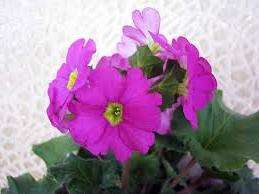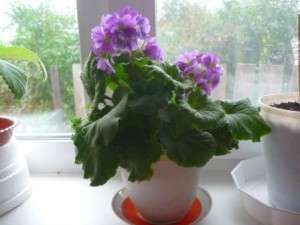
With the beginning of spring, an unusually beautiful flower, primrose, goes on sale. Flowers of various colors, surrounded by green leaves, delight the eye, creating a spring mood. You can not only buy primrose on the market, but also grow it at home with your own hands..
Rules for caring for room primrose
The primrose is also known under a different name – Primrose, which she received for being one of the first to bloom after a long winter. In nature, there are over 500 species of both annual and perennial plants of this family..

Primrose leaves are collected in a rosette, wrinkled and slightly fleecy. They are similar in shape to the heart. Each leaf is located on a long petiole.
Primrose flowers are striking in their variety of colors. They can be either single or collected in inflorescences. Primrose blooms for quite a long time.
Primrose is grown not only as a houseplant, but also as a garden plant. In addition to its charm, this flower also has healing properties: soothing, strengthening, diaphoretic. Primrose leaves are rich in vitamin C.
An important point: some types of primrose can cause an allergic reaction in the form of redness on the skin, rashes.
The primrose will decorate any room. By following simple rules of care, you will be able to achieve long-lasting flowering, pleasing to the eye..
Lighting
Primrose prefers a well-lit place, but try to avoid direct rays, which can cause burns. This rule also applies to the cottage – plant in a shaded place..
Temperature
A cool place is all a primrose needs to grow actively. Comfortable temperature within 15 degrees.
Watering and humidity
The plant is responsive to regular, abundant watering, especially during flowering. But do not overdo it, as excess moisture leads to root rot. After flowering, watering is reduced, but, without allowing the soil to dry out.

Air humidity is not a critical factor for primrose, but it is worth noting that dryness in the room threatens with the fact that the tips of the leaves begin to dry out.
Fertilization
The plant is fed during the budding process, choosing the moment before the buds begin to bloom. Fertilizing before budding results in rapid growth of greenery, rather than an increase in the duration of flowering.

As a top dressing, a weak solution of complex fertilizer with minerals is well suited.
Transplant
Once the primrose has faded, it is ideal to plant it outdoors before the end of summer. Plants left at home are planted by dividing into sockets.
Primrose breeding methods
Primrose can be propagated in several ways, here are some of them:
- Sowing seeds. In the first months of summer, seeds are sown in a wide container, lightly sprinkled with damp earth, and covered with glass on top. Before germination, the container is placed in a cool, semi-dark place. Sprouts begin to appear in 10-14 days. The next step is to transplant the grown seedlings into separate containers..

- Division of the bush. A three-year-old plant is already considered an adult, it often grows strongly. New rosettes interfere with each other, weaken the mother bush, and reduce the flowering period. Therefore, it is recommended at the end of summer to separate the daughter rosettes from the main bush and place them on rooting..
- Rooting of the axillary shoot. In the spring, you need to carefully separate the lateral process. Prepare a box with a sandy substrate in which to place the shoot. Cover the top with foil or build a glass jar from a jar. As soon as roots appear, plant in a pot.
How to properly distill primrose
For distillation, a plant of two years of life or an older flower divided into bushes is suitable. Before the onset of frost, primroses should be dug out, trying to keep the root ball of earth. After that, the plants are immediately planted in pots or boxes..

For storage, flowers are placed in a basement, where the ambient temperature should be within + 4 + 8 degrees. If you leave the flower in a warm room, then the green mass will grow rapidly, while the formation of flower ovaries will be delayed. During this period, the plant does not need watering..
The end of January is the time to bring the primroses into the room. But watch the temperature, it should not exceed 18 degrees. Gradually begin to water the primrose, waiting for flowering. Some plant species begin to delight with flowering in February. Temperature regime not higher than + 15 allows to extend the flowering period. The faded primrose is left in the room until the moment when it can be planted in the garden..

Also read: Indoor primrose: home care. Photo
Now you know, how to grow primrose and forcing. Follow the tips in this article and your apartment will always have a flower corner..
